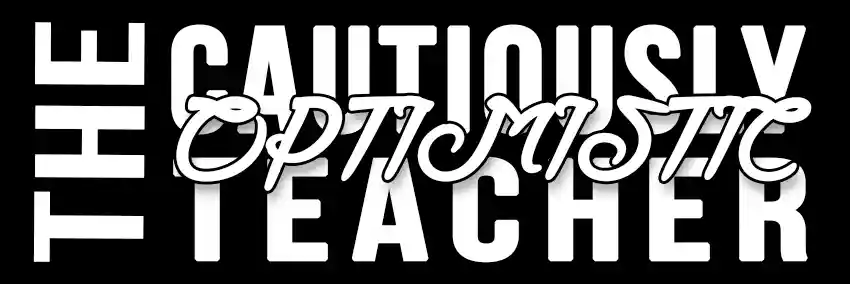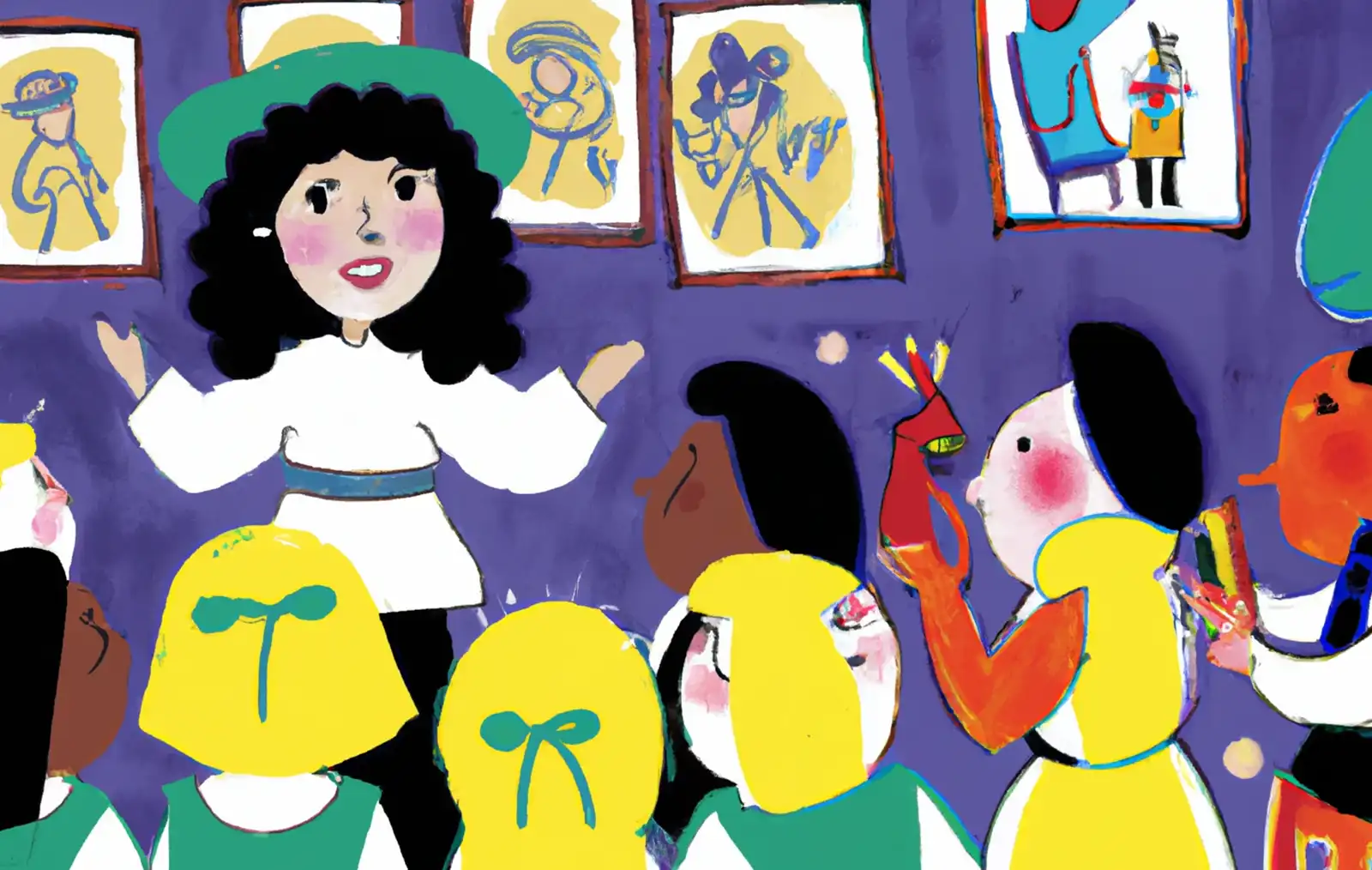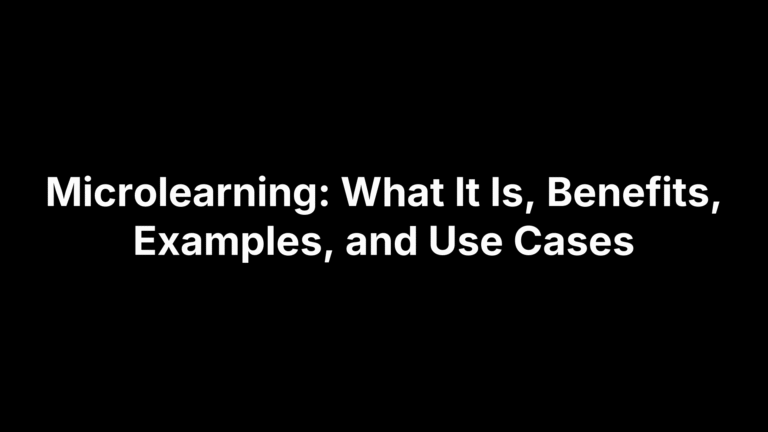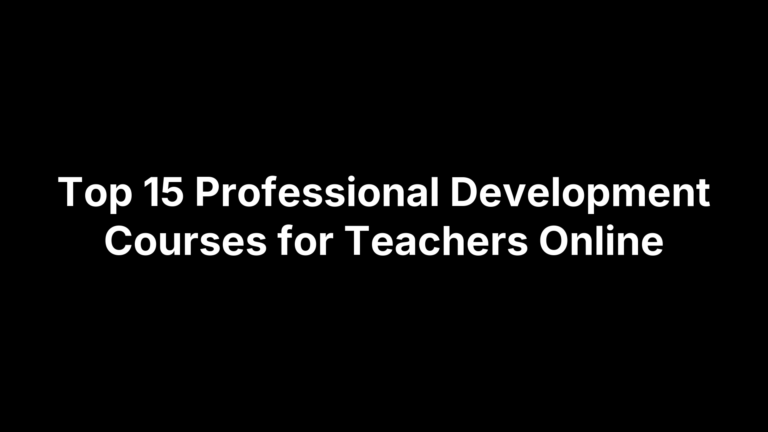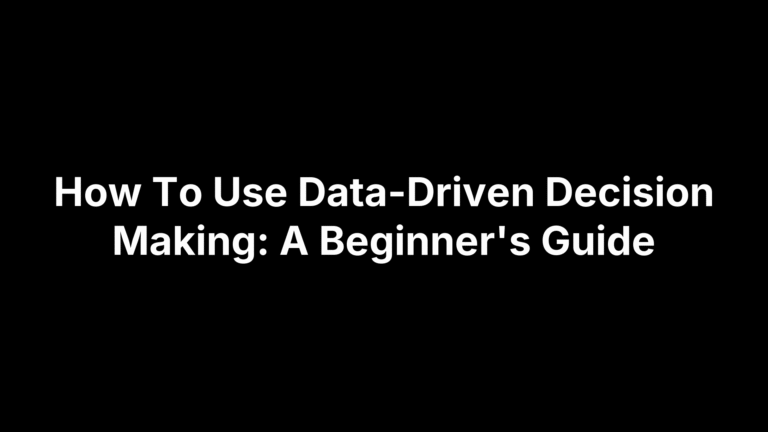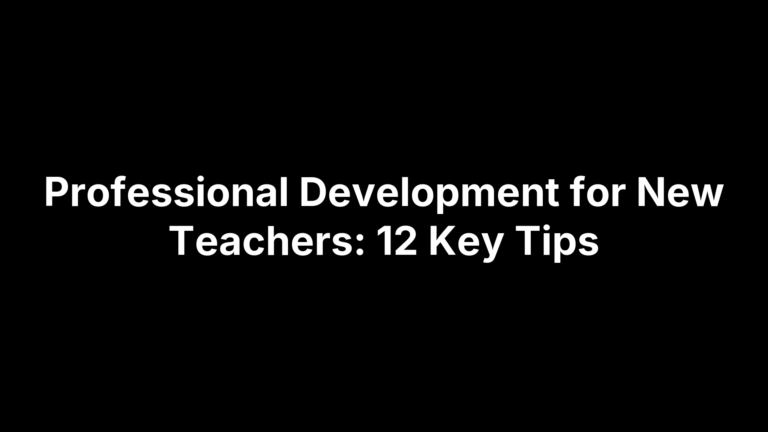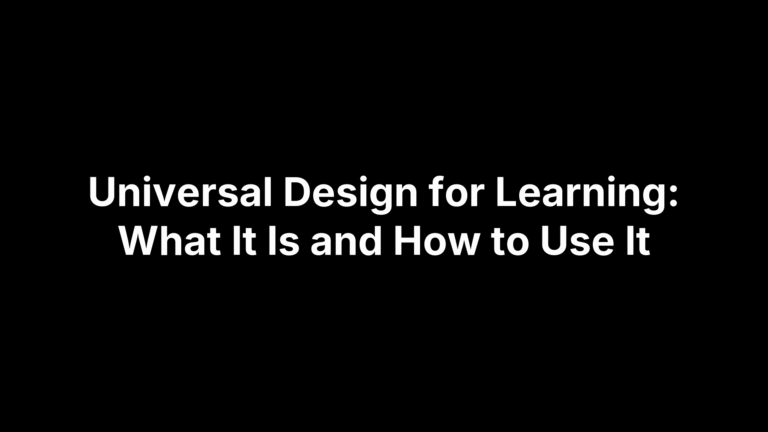Action Research Guide and Examples for Teachers
Every educator enters the world of teaching with a spark – a desire to make a difference, ignite minds, and shape the future. Yet, like any journey, the education path is strewn with challenges, uncertainties, and countless moments of self-doubt. At a point in my teaching career, I felt the weight of stagnation, wondering if I was truly making a positive change. That’s when I stumbled on action educational research. I thought that this was important enough to provide my version of an action research guide.
This research method became my compass, guiding me through the intricate landscape of teaching and learning. It challenged me to be both the researcher and the subject, to question my practices, and to continuously evolve. No longer was I simply “teaching” – I was engaging in a dynamic dance of inquiry, reflection, and growth. And in this dance, I wasn’t alone. My students, often the silent recipients of teaching methodologies, became active partners, collaborators in this shared journey of discovery.
In this article, I hope to share the magic, challenges, and profound revelations of my experience with action research. But more than that, I aim to inspire you, my fellow educators, to see your classrooms as living laboratories, where every day presents a new opportunity to learn, evolve, and shine brighter. Join me as we delve deep into this transformative journey, exploring the boundless potentials that lie within each of us, waiting to be discovered.
What is an Action Research Guide?
At its core, action research is a reflective process that allows educators like you and me to investigate and improve our practices within our very classrooms. Think of it as a magnifying glass, honing in on specific aspects of our teaching, allowing us to see in detail and to understand more deeply. It’s not just about identifying what works and what doesn’t, but about understanding why certain instructional strategies succeed while others falter.
So, why is action research so pivotal in our teaching journey? The beauty of an action plan lies in its immediacy and relevance. It centers on real-world challenges and tangible solutions within our own contexts. While theoretical knowledge and external research studies offer valuable insights, action research empowers us with findings directly rooted in our classrooms. It bridges the gap between theory and practice, ensuring that our teaching methods are not just sound in theory but effective in real-world application.
In essence, embarking on action research is like setting sail on a voyage of enhanced self-awareness, with the following steps guiding the way:
Identifying a Problem: This is our starting point, our compass direction. What challenges or uncertainties are we facing in our teaching? What are we curious about?
Planning: With the problem or question in mind, we chart our course. How will we gather the information needed? What changes might we experiment with?
Action: With a plan in place, we set sail, implementing the strategies or changes we’ve identified.
Observation: As we navigate, we’re constantly watching the waves and the skies – in our case, gathering data and feedback from our actions.
Reflection: With data in hand, we drop anchor for a while, taking the time to think deeply about what we’ve learned.
Revision: In the final step, with fresh insights, we might adjust our course, refining our strategies based on our reflections, and begin sailing once again.
This cyclical process isn’t just about problem-solving. It’s a commitment to continuous growth, a promise that we make to ourselves and our students to be the best educators we can be. Through action research, we’re not just teaching; we’re evolving, learning, and rediscovering the joy of our profession every single day. That is what I want to share in this action research guide.
1. Charting the Course: The Art of Identifying a Problem

The first and arguably most crucial step in the action research voyage is identifying a problem or pinpointing a question. This is where our journey truly begins. It’s akin to realizing there’s a distant shore we’ve not yet explored, a place where new discoveries await. But how do we find this shore? How do we articulate what we’re looking for?
Types of Problems to Explore
Start by looking at everyday challenges in the classroom. These problems can range from tangible issues like decreasing student engagement during specific subject matter or time of day, to more complex concerns like understanding why a specific subgroup of students struggles more than their peers. The key is to select a problem that’s significant enough to warrant investigation but also manageable given your resources and time frame.
Remember, your chosen issue doesn’t always have to stem from a negative challenge. Perhaps you’ve noticed an unexpectedly positive response from students during certain activities and want to explore why, aiming to amplify that success elsewhere.
Framing the Question
Once you’ve identified an area of interest, the next task is to articulate a clear and focused research question. This question should be open-ended, steering clear of simple ‘yes’ or ‘no’ answers. For instance, rather than asking, “Does using visual aids improve student understanding?” you might frame the question as, “How does the use of visual aids influence student understanding and engagement during history lessons?”
By framing our question in this manner, we’re setting ourselves up for a deeper dive, one that considers the nuances and variables at play.
Transitioning to Planning
With our problem identified and our question framed, the horizon is in sight, and it’s time to set the sails. But before we do, we need to gather our navigation tools. This means taking stock of the resources at hand and considering preliminary ideas about potential strategies or changes to implement.
To transition smoothly into the planning phase, start by:
Documenting Initial Observations: Make notes on the current scenario. This will give you a baseline against which you can compare post-action results.
Engaging Colleagues and Students: Share your observations and research questions with fellow educators or even your students. Their insights can often shed light on aspects you might have missed and can guide your planning.
Reviewing Existing Literature: While action research is primarily about your own classroom, drawing on existing studies or theories can provide foundational knowledge and inspiration.
With these transitional steps, you’ll find yourself better equipped and more confident as you step into the planning phase. Identifying a problem is not just about acknowledging a challenge or a question; it’s about reigniting our curiosity, remembering why we became educators, and setting forth on a transformative journey with renewed vigor and purpose.
2. Navigating with Precision: Crafting a Thoughtful Plan
After pinpointing our problem and framing our research question, we arrive at the pivotal phase of planning. Like a captain ensuring every instrument, map, and crew member is in place before setting sail, an educator’s plan is their beacon, illuminating the path ahead and minimizing unforeseen challenges.
Elements of a Robust Plan
Objective and Clear Goals: Start by defining what success looks like for your action research. Whether it’s an improvement in student achievement, better participation, or more positive feedback, having a clear goal will guide your every step.
Methods for Data Collection: Decide on the tools you’ll use to gather information. This could be student assessments, student surveys, observation notes, or even video recordings. The method should align with the research question and be practical to implement.
Timeline: Construct a realistic timeline for your research. Define when you’ll start and finish the action, when you’ll collect data, and when you’ll analyze and reflect.
Resources: Identify any additional resources you may need. This could include technology, external expertise, or supplementary teaching materials.
Feedback Mechanisms: Plan for periodic checkpoints where you can gather interim feedback, either from students, peers, or through self-reflection.
Ensuring Success in Planning
Collaboration: Engage with fellow educators, seeking their insights or feedback on your plan. A second set of eyes can often identify potential pitfalls or areas of improvement.
Flexibility: While planning is essential, rigidly adhering to a plan without room for adjustment can be counterproductive. Be prepared to tweak your approach based on ongoing observations.
Alignment with Broader Curriculum: Ensure your action research plan doesn’t divert too significantly from the curriculum or educational goals. It should complement and enhance the broader educational objectives.
Knowing When the Plan is Ready for Action
Clarity and Vision: You should be able to succinctly explain your plan and its purpose to a colleague or even a student. If you can articulate it clearly, it’s a good sign you’ve thought it through.
Feasibility Check: Ensure that your plan is realistic. Do you have the resources, time, and support needed?
Positive Anticipation: If, after all the drafting and redrafting, you find yourself excited and optimistic about implementing your plan, it’s a good indicator that you’re ready to move forward.
Remember, a plan isn’t just a roadmap; it’s a promise – a commitment to our students and ourselves. It represents our dedication to enhancing our teaching practices and ensuring our best student outcomes. When the planning phase is executed with thoroughness and passion, the subsequent steps in our action research journey become more manageable and incredibly rewarding.
3. Setting Sail: The Vital Phase of Action in the Classroom

With our compass set and our maps drawn out, we step into the heart of our action research journey: the Action phase. This is the stage where our planning comes to life, our theories meet reality, and our classroom becomes the laboratory of educational innovation. Here, the rubber meets the road.
What Does Action Look Like in the Classroom?
Implementation of Action Research Guide: At its core, the action phase involves bringing the planned strategies or changes into the classroom. This could mean introducing a new teaching technique, using a different form of technology, adjusting classroom seating arrangements, or integrating new types of learning materials.
Active Observation: As these strategies unfold, it’s vital to maintain an active observation stance. This means not just teaching but keenly watching and noting the students’ reactions, participation levels, and engagement.
Openness to Feedback: The action phase isn’t about getting everything right on the first try. It’s about learning and adapting. Be open to feedback, both from students and peers, and be prepared to make minor adjustments along the way.
Maintaining Consistency: While flexibility is crucial, it’s equally important to give your strategies enough time to truly take effect. Consistency ensures that the observed results are genuinely a product of the changes you’ve implemented.
Specifics of Implementing the Plan
Start with Clear Communication: Before diving in, communicate your intentions to your students. Let them know that you’re trying something new and that their feedback is crucial. This not only sets expectations but also fosters a collaborative environment.
Document Everything: Maintain a journal or a digital log to document daily observations, challenges, successes, and any unexpected occurrences. This documentation will be invaluable during the reflection phase.
Seek Peer Support: If possible, invite a fellow educator to observe a class session. Their external perspective can offer invaluable insights and provide an objective viewpoint on the efficacy of your strategies.
Stay Adaptable: If a particular strategy isn’t working as anticipated, don’t be disheartened. Remember, the action phase is as much about learning what doesn’t work as it is about discovering what does.
Maintain Student-Centricity: Always prioritize the well-being and learning experience of your students. Ensure that any adjustments made during the action phase align with the best interests of the learners.
In essence, the action phase is where our dedication, passion, and commitment are truly tested. But it’s also where we, as educators, experience the profound joy of discovery, the exhilaration of innovation, and the satisfaction of seeing our plans come to life. As we navigate the waters of our classrooms, every challenge encountered and every success celebrated enriches our journey, making us not just better classroom teachers but lifelong learners.
4. Observing with Intention: The Critical Lens of Data Collection
The canvas of our action research becomes vibrant as we immerse ourselves in the action phase, but the true depth of our insights emerges through the lens of observation. Observing is more than just watching; it’s a meticulous process of data collection, allowing us to gather evidence of our action’s impact. In this intricate dance of teaching and learning, observation is our spotlight, shedding light on both the expected and the unexpected outcomes of our efforts.
How Teachers Should Gather Data
Stay Organized: Organize your observation tools in advance. Whether it’s a digital tool, a journal, or a structured survey, having them readily available ensures you capture data efficiently.
Consistent Timing: Choose specific times for your observations. Consistency will help you understand patterns and changes over a period.
Diversify Data Collection Methods: To gain a holistic understanding, use a mix of observation tools and methods. This ensures you’re capturing a well-rounded snapshot of classroom dynamics.
Types of Data to Collect
Qualitative Data
Anecdotal Records: Keep a journal where you note down specific incidents, conversations, or behaviors that stood out during the lesson. This offers insights into individual student experiences and reactions.
Student Feedback: Collect feedback from students about their experiences. This can be done informally through discussions or formally through structured feedback forms.
Peer Observations: Invite fellow educators to your class and ask for their feedback. Their perspective can offer new insights or validate your observations.
Reflective Journaling: End each day with a personal reflection. How did you feel the lesson went? Were there surprises? What went well, and what could be improved?
Quantitative Data
Assessment Scores: Track students’ performance on tests or quizzes. This provides measurable evidence of learning outcomes.
Attendance and Participation Rates: Monitor if there’s a change in attendance or participation. Increased engagement or attendance could be a sign of positive reception to your strategies.
Time Tracking: Measure the time students take for specific tasks or the time spent on certain activities. This can show if students are becoming more efficient or if they are more engrossed in particular activities.
Surveys with Scaled Responses: Use surveys where students can rate statements on a scale (e.g., 1-5). This provides quantitative data on students’ perceptions and feelings.
Additional Considerations for the Observation Phase
Maintain Objectivity: As invested as you are in the outcome, strive for objectivity. Your aim is to understand the genuine impact of your actions, whether positive, negative, or neutral.
Ensure Confidentiality: If gathering feedback or noting specific student behaviors, ensure that data is kept confidential. Respect privacy and use data ethically.
Stay Open-Minded: Be prepared for unexpected outcomes. Sometimes, the most unexpected observations lead to the most profound insights.
Observation, when approached with diligence and intention, unveils the intricacies of our classroom dynamics. It offers us a mirror to see the results of our actions, a window into our students’ experiences, and a telescope to envision the future course of our teaching journey.
5. The Harbor of Insight: Delving into the Reflection Stage
As our action research guide begins to reach its crescendo, we find ourselves anchored at the reflection stage—a moment of pause, introspection, and insight. Like a traveler pouring over the pages of a travel journal, the educator now sifts through the collected data, seeking to understand, interpret, and ultimately chart the way forward. The reflection stage isn’t merely an endpoint; it’s a springboard for future journeys, a compass recalibration, ensuring our teaching sails are ever aligned with the winds of effective pedagogy.
Data Analysis
Descriptive Analysis: Begin by taking a broad view of your data. Lay out all the qualitative research and quantitative information and look for obvious trends, patterns, or standout points.
Comparative Analysis: Compare the data from different points in time. How have things changed from the start to the end of your research? Look for improvements, regressions, or constants.
Pattern Recognition: Especially with qualitative data, search for recurring themes or sentiments. Are students consistently expressing a particular feeling or opinion? Do certain topics or methods evoke similar reactions across the board?
Statistical Analysis: For quantitative data, employ basic statistical tools (mean, median, mode, standard deviation) to get a clearer sense of your results. Tools like spreadsheets can assist in visualizing data trends.
What to Do with the Data
Document Your Findings: Craft a comprehensive report or journal entry detailing your findings. This not only helps in organizing your thoughts but serves as a valuable resource for future reference or sharing with peers.
Evaluate Against Objectives: Revisit the goals you set during the planning stage. Have these been met, exceeded, or not reached? Understanding this alignment helps in measuring the success of your action research.
Seek External Perspectives: Share your findings with fellow educators, mentors, or even students. Their insights can offer additional interpretations or validate your conclusions.
Consider the Broader Implications: Think beyond the confines of your classroom. How might your findings impact the wider school community, curriculum planning, or even educational theory?
Guiding Questions for Deeper Reflection
- How do the results align with my initial expectations?
- Were there any surprises in the data? What might have caused them?
- What were the challenges encountered, and how were they addressed?
- How have my students truly benefited (or not) from the implemented changes?
- What have I, as an educator, learned about myself, my teaching style, and my students through this process?
- Given another opportunity, what would I do differently? What would I retain?
Reflection is a potent tool, transforming raw data into actionable insights. It challenges us, reaffirms our beliefs, or offers a fresh perspective. But, above all, the reflection stage celebrates the spirit of action research in education—the relentless pursuit of betterment, the unwavering commitment to growth, and the heartfelt dedication to our students’ success. With every cycle of reflection, we don’t just become better educators; we amplify our impact, one classroom at a time.
6. Recharting the Course: Embracing the Power of Revision
With reflection complete, the map of our action research is fully sketched, brimming with insights and discoveries. But like any map of uncharted territories, revisions are inevitable, even welcome. The revision stage is the alchemy of action research, where past learnings are transmuted into the gold of future strategies. It’s not just about identifying what went wrong, but more crucially, about envisioning how things can be even better.
Revising with Purpose
Identify Areas of Improvement: Using the findings from the reflection phase, pinpoint specific areas that did not meet expectations or had unintended outcomes. Highlight these as primary candidates for revision.
Revisit Goals: Sometimes, it’s not the strategy but the goal that might need reconsideration. Ensure your objectives remain relevant to the ever-evolving classroom dynamics.
Integrate Feedback: Take into account the feedback from students, peers, and your self-reflections. Feedback is the cornerstone for any revision process.
Seek External Resources: Dive into educational literature, attend workshops, or collaborate with fellow educators. Bringing in external insights can provide fresh perspectives for your revisions.
Feeding Back into Another Round of Action Research
Starting Anew, Armed with Knowledge: The revision essentially kickstarts a new cycle of action research. But this time, you’re not starting from scratch. You’re armed with past insights, making your next cycle more refined.
Refined Questioning: With the data and reflections from the previous cycle, you can frame more specific research questions, addressing nuances you might have missed earlier.
Iterative Process: Understand that action research is iterative. Each cycle of revision and implementation brings you closer to an optimal strategy. It’s about continuous improvement, not instantaneous perfection.
Building a Repository: With each iteration, you’re essentially adding to a repository of teaching strategies, observations, and reflections. This becomes an invaluable resource, not just for you but for any educator looking to embark on a similar journey.
Important Considerations for the Revision Stage
Embrace Change with Positivity: Revision isn’t an admission of failure. It’s a celebration of growth. Approach it with optimism and view it as an opportunity.
Maintain Student-Centricity: Always keep the students at the heart of your revisions. Any changes you introduce should foremost benefit their learning experience.
Pace Yourself: While the enthusiasm to correct and implement can be overwhelming, ensure you’re giving yourself ample time for revisions. Hasty changes might not yield the desired results.
Document the Process: Just as with the initial action research, document every step of your revision process. This creates a trail of your evolution as an educator and can be insightful for future reflections.
Revision, in essence, is the heartbeat of action research. It embodies the spirit of adaptability, resilience, and continuous learning. Each revision is a testament to an educator’s unwavering commitment to excellence, a nod to the belief that while perfection might be elusive, the next step is always worthwhile. And as the cycle recommences, each iteration, informed by the last, pushes the boundaries of what’s possible in our classrooms, one revision at a time.
10 Types of Action Research Projects That Might Interest Teachers

- Differentiated Instruction: Research how implementing differentiated instruction strategies affects student engagement and understanding in a mixed-ability classroom.
- Incorporating Technology: Explore the effects of integrating technology (like tablets or specific educational apps) on student motivation and comprehension in a particular subject.
- Mindfulness and Student Behavior: Investigate the impact of daily mindfulness exercises on student behavior, attention span, and emotional well-being.
- Homework’s True Value: Study the correlation between the amount/type of homework given and students’ academic performance and stress levels.
- Effects of Outdoor Education: Explore how outdoor education can improve student confidence, behavior, and overall demeanor.
- Peer Tutoring and Collaboration: Research the effects of peer tutoring or cooperative learning structures on students’ academic achievements and social skills.
- Reading Strategies for Struggling Readers: Investigate the effectiveness of specific reading interventions on improving the fluency and comprehension of struggling readers.
- Feedback Methods: Explore the impact of various feedback methods (written comments, grades, peer feedback) on students’ academic performance and their perceptions about learning.
- Culturally Responsive Teaching: Research the outcomes of implementing culturally responsive teaching methods on the engagement and achievement of students from diverse backgrounds.
- Classroom Environment and Learning: Examine how changes in the classroom environment (e.g., seating arrangements, use of visuals, ambient noise) influence students’ concentration, participation, and overall learning experiences.
Each of these projects can help educators better understand their students, teaching methods, and overall classroom dynamics. By analyzing and reflecting upon the results, teachers can refine their practices to better meet the unique ways our students learn.
An Example of Action Research Project for Differentiated Instruction
Action Research Project Plan: Differentiated Instruction in Social Sciences
1. Introduction:
Purpose: To enhance student learning and engagement by tailoring instruction to meet individual needs.
Rationale: Observations indicate a range of abilities and learning styles within the classroom. A differentiated instruction approach may better cater to this diversity, ensuring all students are given an equitable opportunity to succeed.
2. Research Question:
How does the implementation of differentiated instruction strategies impact student engagement, understanding, and achievement in a mixed-ability classroom?
3. Data Sources:
Pre-assessment Surveys: Administer surveys to gauge students’ prior knowledge, learning preferences, and interests related to the topic at hand.
Lesson Observations: Use a checklist or journal to record levels of student engagement and participation during differentiated activities.
Student Feedback: Use informal discussions, suggestion boxes, or structured feedback forms to gather students’ perceptions of the differentiated activities.
Assessments: Compare performance on standardized tests or assignments before and after the introduction of differentiated strategies.
Teacher Reflection Journal: Maintain a daily or weekly journal to record personal observations, challenges, successes, and unexpected outcomes.
4. Differentiated Strategies to Implement:
Content Differentiation: Provide materials at varying reading levels, offer video/audio resources, and use graphic organizers.
Process Differentiation: Introduce tiered assignments where students can choose tasks based on complexity, conduct group activities tailored to different skill levels, and offer choice boards.
Product Differentiation: Allow students to showcase understanding in various ways (e.g., presentations, written reports, art projects, group projects, project-based learning, research paper).
5. Implementation Timeline:
Week 1: Administer pre-assessment surveys and conduct baseline observations.
Week 2-4: Gradually introduce differentiated strategies, starting with content differentiation.
Week 5-7: Incorporate process differentiation while continuing to monitor and adjust content differentiation based on feedback.
Week 8-10: Introduce product differentiation. Continue all forms of differentiation, making adjustments as needed.
Week 11: Administer post-assessment tests and gather student feedback.
Week 12: Analyze data, reflect on findings, and start drafting the research report.
6. Analysis:
Compare pre and post-assessment scores to gauge academic growth.
Analyze observation checklists to determine patterns in engagement and participation.
Use student feedback to understand their perceptions and experiences.
Reflect on teacher (the action researcher) journal entries to identify challenges, successes, and areas for future exploration.
7. Conclusion and Future Steps:
Summarize key findings, insights, and implications of implementing differentiated instruction.
Outline actionable steps for further refining and expanding the use of differentiated strategies based on the findings.
Consider collaborating with colleagues or attending professional development workshops for additional strategies and insights.
8. Share and Collaborate:
Present findings at school meetings or professional development sessions.
Collaborate with other educators to expand on successful strategies and brainstorm solutions for challenges.
Consider publishing findings in educational journals or sharing on teacher platforms to contribute to the wider educational community’s knowledge.
By following this plan, teachers can systematically investigate the potential benefits of differentiated instruction in their classrooms, allowing them to tailor their teaching methods to better serve all students.
Concluding the Action Research Guide: Refining Education One Cycle at a Time
The realm of education is in perpetual motion, driven by an unyielding quest for methods that can uplift, inspire, and catalyze effective learning. Action research emerges as an invaluable instrument in this quest. By weaving an intricate tapestry of questioning, planning, action, observation, reflection, and revision, action research empowers educators to actively sculpt their instructional practices, honing them in response to real-time classroom dynamics.
From the initial stages of identifying pertinent issues—be it the challenges of differentiated instruction, the integration of technology, or the nuances of classroom environment—to the iterative cycles of revision and reimplementation, participatory action research is a testament to educators’ proactive and adaptive spirit. It’s not merely about identifying what works but understanding why something works and how it can be improved.
Every phase, from the clarity of planning to the meticulousness of observation and the introspection of reflection, fortifies the foundation upon which educators build their strategies. The revision phase, integral to the cyclical nature of the action research process, underscores the philosophy that education is not static; it evolves, mirroring students’ dynamic needs and aspirations.
In essence, action research topics in education is both a journey and a destination. As a journey, it offers educators a structured pathway to navigate the intricate corridors of pedagogy, seeking betterment at every turn. As a destination, it culminates in classrooms where both teaching and learning are optimized, where educators, armed with insights and refined strategies, are better equipped to steer their students towards success.
In wrapping up our exploration, it’s clear that the action research cycle is not a mere academic exercise but a potent catalyst for transformative change in elementary schools, middle school, and secondary schools. It beckons educators worldwide to adopt a mindset of continuous improvement, forever striving, forever refining, and forever reimagining the horizons of what’s possible in our classroom practices.
